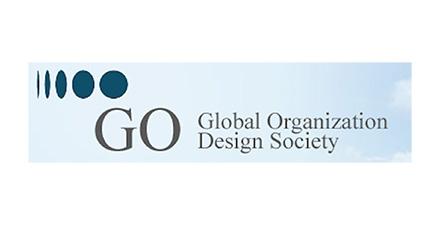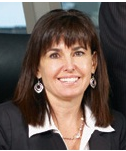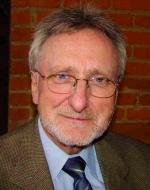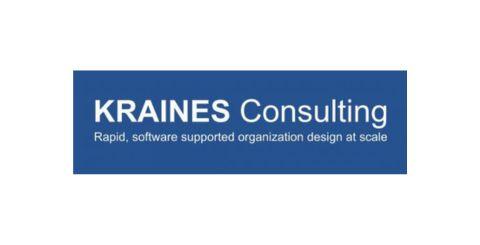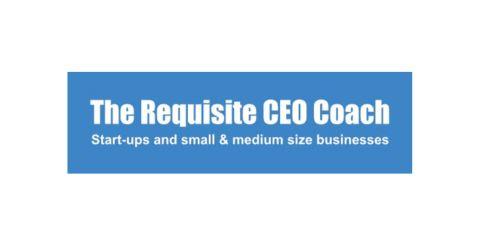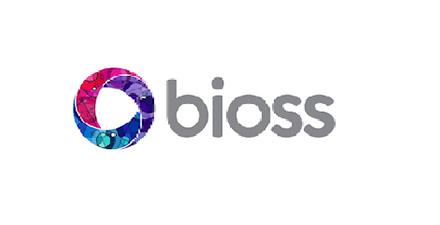"Mining" Value Through RO Implementation at SUNCOR
SPEAKER A Just quickly, by the way of introduction and making connections. As I mentioned, my colleague of mine, Sue Symington, who's in Ovacom, Inc. Had a client relationship with the EVP of oil san...
Transcript of the presentation video
NOTE: This transcript of the video was created by AI to enable Google's crawlers to search the video content. It may be expected to be only 96% accurate.
SPEAKER A
Just quickly, by the way of introduction and making connections. As I mentioned, my colleague of mine, Sue Symington, who's in Ovacom, Inc. Had a client relationship with the EVP of oil sands, and he had, from the previous work he had done, he liked the principals very much. And so he asked us to come in and to do some work. I first actually met Adrienne. I guess I met Adrienne first in the sense that at that time she was with Suncor. She's now with a different organization, which she'll explain. So they had a little issues, a few issues, minor issues, some considerable issues in a mergery kind of thing going on, in the sense of a. An outside purveyor of maintenance services was coming in to work with the sustaining projects group. And so Adrian was the director of the sustaining projects organization at the time. That's where the work started. And then sue and I began to work with Kirk around, taking a look at his. At his entire organization. And then that's where I met both Mike and you, Annemarie. And just like Mike, I think people with the kind of capability that these people have very quickly recognize some of the power and the opportunity that were in these principles. And I think Ag Marie, I think you were kind of first out of the gate. You said, I want some of this stuff. And so that's where the work began. So with that, I'm going to turn it over to you. And away we go.
SPEAKER B
So Adrian and I are going to tag team our presentation. And as introduced, I'm actually an operator. I'm a mining engineer by trade. I've worked in industry and technical roles and operations roles with increasing responsibility for about the last 25 years in my industry, the first 16 in coal, metallurgical and thermal coal in western Canada, and then in the canadian oil sands for the last eight years. We were talking at our table this morning during some of the discussion about the impetus for introducing Ro, and I'm going to describe just briefly a little bit about that. So I think about the business challenge we are faced with. And I joined Suncorp in 2004. Mike eloquently described this morning our organization, and I think he used the word we were mavericks. So we started in the mid 1960s in the oil sands, and our operation for the first 2025 years of its life was about existence. It was about proving that this technology could actually work and could be viable in a business sense. When I joined Suncor in 2004, we'd just gone through the millennium expansion, and at that point in time, about 95% of the bitumen that was going into the plant came from the mining operation. And when I got there, the first thing that struck me was that I couldn't figure out who was running what down at the ground level. I think I counted after I understood all the leveling, I had about four people working in the l two space. And intuitively, I'm an n for all you people who think about that. So intuitively, I just knew this was wrong. So I started slashing layers out and doing some work and getting some accountability work clear. But it was as our organization started to grow, I started to work with the engineering group and regroup and restructure that work. And it was in conversation with my EVP saying, look, I gotta go after the operation too. Some of the reasons here are why I had to go after the operation. In 2006, the middle of 2006, we completed the reserves in one mine called the Steep bank mine, and we consolidated all our mining activities in a single pit called the Millennium Mine. This made us one of the largest, most complex and most congested mines in the world. So at the point in time that I met Paul Tremlett, we had gotten to the point where we were docking the productivity of our fleet by 14% because of traffic jams in the field. Any of you who've been up to Fort McMurray and know what traffic's like on highway 63 at shift change, that's essentially what our operation was starting to look like. So the size and complexity of this operation was about the geography of the pit. It was also about the equipment and where we were heading. So the picture to the right is one of our shovels. So we have 15. We had 15 cable shovels. At that time. We had over 100 ultra class haul trucks, the largest haul trucks in the world. And I knew within 18 months we were going to have 140 of them running around in that mine. And we were growing, as you see by the sides. We had about 2000 employees. We're going to add another couple hundred truck drivers. We were expanding our contractor capacity and it just could not go on with the infrastructure we had in place. We were adding at l one at the front line. But we had not changed our l two managerial level in years and years and years. It's complicated by running four shifts, three days on, three days off, three days, three nights, six off. So you got four crews, four cultures, four independent ways of working. So why was ro the solution? That summary, I started giving you a bit of hints about this, but I would say first and foremost was feedback we were getting from employee engagement surveys. Our HR department was very fond of employee engagement surveys. I mean, we don't like getting the results, but some of the comments to the bottom spoke to the fact that people felt they were just a badge number. Remember, we had been a small, maverick company where you knew the executive vice president because he was out in the field and you only had a couple hundred employees. They said we weren't keeping up with the pace. The supervisors are overworked, they're understaffed. These are just. And I actually grabbed them from the 2004 survey to share with you. Somebody spoke early about mutual recognition units. You know, intuitively, I kind of knew that there was too many people working for each manager and director, but certainly at l three, my director, you know, we were targeting somewhere, hoping for three to 400 people. I think, Paul, your advice was 250. I had 900 people working for an l three director. There's no way that he's going to get to know the people and create that sense of community. Thirdly, we'd had a fatality. July 8, 2008 was the first time there was a fatality that happened on a property that was under my control. And some of the learnings from that, you can see the little puzzle pieces to the bottom. One of the puzzle pieces was around organizational conditions. And specifically, we said, you know what? As an organization, we had to get role accountability for all our staff. We needed to ensure that management was really clear on who was supervising jobs. Now, this wasn't the root cause of the fatality, but it was a contributing factor. There were a lot of people working in the area, and they all thought they were working for somebody else. So who was overseeing the work? Who was checking the field level risk assessment? Who was making sure that the work was being done following procedure? If everybody thought somebody else was supervising that particular job that particular day, the fourth thing that I would say is also very similar, and at least to the little picture up at the top, right? I had an incident. Well, you know, your phone always rings when you're an operations leader one day. So the next morning we're having a conversation with my two directors. At this point in time, and for the life of them, and these are both incredibly great guys, like, very, very talented. Neither one of them legitimately thought they owned the incident. I mean, I had it by then you might have figured out that I can hold my own with the crowd. So I kind of looked at them and said, you've got to be careful if you don't own it, Bob, and you don't own it, Kevin. You really think I own this one? Like, so we had to get very, very clear. And with the complexity of having an automated dispatching system where, you know, computers, it's like air traffic control, right? A series of computers are telling trucks and shovels where to move and where to go. All day long you've got equipment moving and faces moving and advancing. We kind of said, gee, we really have to get to the heart of this. So we created this little vision up at the top where people have two accountabilities, managers and frontline supervisors. They are both a people manager of a group of people. Could be similar to a homeroom in a high school, right? You have a homeroom teacher, but you don't spend your day with your homeroom teacher teacher. So we were both people leaders, and we are geographic leaders. So out in that vast expanse of a mine with all this equipment running around, there was a portion of the footprint of the mine that was yours. It's yours from an environmental perspective. It's yours from a safety perspective. It's yours from a production perspective. But the people who you're accountable for is anybody working in that footprint because somebody else gave them to you? You. And it's also your home base from a perspective of vacation attrition, needing time off, performance management perspective, you had a home based group. So that was really important in a dynamic organization. So those were some of the reasons why we said, hey, let's give this a try. We need to get something that's very structured. We can't just keep faking this on Ann Marie's intuition. And I have Adrienne, who actually worked for me in the mine at one point in time. But at the point we took this on, she had become an HR practitioner, and she's going to describe really briefly some of the four key implementation essentials that we found.
SPEAKER C
Thanks, Anne Marie. So, in terms of the implementation essentials, what I'd like to talk about was, I guess, maybe the first problem that we had. So, as Anne Marie described, people are used to in a mine having everyone, all the equipment operators, primarily report into one person. And that's the model and the paradigm. So although we did some really good work to come up with a structure and have people managers and geographic managers, it kind of hit a bit of a roadblock at l three, and they're like, no, it can't work. No, it can't work.
SPEAKER B
We've never seen it.
SPEAKER C
We've never seen it. It's not going to happen. And we're making no progress. So in order to break the logjam, what we did was emory, as our l four leader said, I'm going to give you the musts. These are some musts. And so I actually put up there a little document of just circling some of the things that we put down as the must. And then she said, l three team, you go away and work the solution. You work it because there's some musts. We have. We have to have, for example, clear accountability around safety in any geographic location in the mine. We also have to understand that our supervisors, who are really important people in the mine, their talent in coordinating all the activities in the mine on a daily basis are fantastic. But they operate at l one. And so as l two leaders, you can't assign your managerial responsibilities to, to your l one leaders, which was what was happening. So they thought they had a good enough sized team because they had all these supervisors out there to support them, but they didn't have the skills, time or capability to do the leadership work that was required. So we put down some muss and Emory flew us down to Calgary and we rolled up our sleeves and I think after about an hour the guys said, no, it's not happening. We can't figure it out. I said, okay, well, I'm going to get on the phone and call Emory and tell her we're done. That really happened. And so they're like, oh, well, maybe we'll try a little longer. So two days later we came up with a solution and why this was a great implementation. Essential is not that we came up with that much different than what we had, is the time that they had for those two days where we worked it and talked through the issues, made them experts in the actual principles. I don't want to say experts, but highly proficient and very knowledgeable. And their team just kind of bonded and they really own the design. So I think the piece around l three, whether you come at it because things just weren't working or you choose to just really put a lot of accountability in your l three leaders was something that we found really helpful. The next step was the requirement for a pretty comprehensive project implementation plan. We touched many stakeholders. There's thousands of people. It was a pretty broken up organization at the time. We really wanted to make sure that as we did it, we had the strategic patience to take it from the structure, it was to the equipment operator. Otherwise we wouldn't really achieve our goal of reconnecting the people. We also had to consider that we had to have a safe go live. So we looked at all the things that had to happen. We looked at the conversations, bringing it down through the organization, doing sort of the side to side check. Am I aligned with my peers? Do our leaders understand? And we went through workshops and education, and that actually was the determining that project plan, which is a little snapshot with some scribbles because it was in the middle of a very calm, complex planning behind it that actually said, this is when the go live date can be. So I did hear one comment earlier today that, you know, sometimes you have to go and go quick, and that's really important, but sometimes you have to have the strategic patience so that at each level they have the sync time to actually understand and appreciate the principles. So in this case, we had to wait till November 10, 2009, and we started our journey in January. So after we touched all, in order to touch all the shifts and all the stakeholders, we had to take the time to do it right. The next piece is the education piece, the education and knowledge. And I'm not going to spend a lot of time on this, but what we found was our guys were very easily able to understand gaps and jam ups and solve them on their own because, you know, our l three guys were really close to the principals, and the l two managers also became, had the same skills and they became the teachers. So when we had the big workshops, it wasn't me giving the slideshow on accountability based principles. It was actually the managers themselves. And I think that really solidified the commitment as we went moved through the organization. The last piece is a coaching approach. So fortunately, Anne Marie's team were trained in real time coaching. And so as we worked through the different role descriptions, it was more a case of questioning and probing and digging into areas where things hadn't worked before. And will this new solution work? And the types of conversations that we had with these leaders, they again began to bond and sort of had a safe environment where they had some candid discussions and they pushed around some ideas. And at the end of it, I think Emory had a exceptional team when we finished. So that's how I spent eleven months in four minutes, and I'll turn it back to Ann Reid and she can tell you whether or not it was worthwhile.
SPEAKER B
Adrienne actually says, I actually left and didn't see what happened. And even though we're personal friends, we never really discussed what's happened with this. So it's been quite an interesting experience to pull this together. I want to speak a little bit about the results and some people asked about metrics and other things earlier. First and foremost, you can expect I was interested in safety results. And I cannot attribute 100% of our safety improvement to implementing ro principles. But it certainly played a significant foundation. We are also ten years into a cultural change around safety, something we call our journey to zero. And obviously that was the cornerstone of our safety improvement. But to give you some real numbers, when I joined the mine in 2004, we had a recordable injury frequency that year of 1.36. That means for about the 3000 people that I had working in my operation, 41 people required medical attention. So their injury was significant enough that they needed stitching, they needed something cast. Those aren't lost time incidents, but I had 41 people require medical attention. By 2008, the time that we really got into this work, the recordable injury frequency had dropped to 0.98. So 30 people. So eleven fewer people annually were requiring medical attention. And I can tell you that last year, which is the year that I left the mine, our recordable injury frequency for mining operations was 0.46. So last year, 14 people required medical attention. So 27 fewer people required medical attention in a single year in our operation. And to me, that's worth it right there. You don't need any other results. So that's fantastic. A couple other things. We did get some feedback from subsequent surveys. So Mike Agnew spoke about the merger. And we did some cultural surveys just at the time of the merger and a year later from the merger. And one of the quotes that came out in our management review of the cultural survey was that clarity around accountability remains a key theme at oil sands overall. But the result is not as prevalent in the mind. That means we made accountability good progress. Fewer people said they were unclear about their role. Accountabilities in the mine. And actually the stats at the bottom show that particular feedback. So we had about a 3.5% improvement in our accountability score. Is it enough? I don't know, but it's a signal and a metric in the right direction. We also did meet my goal of establishing mutual recognition units. So there are currently between 120 and 148 employees per manager. And there are now three directors working in that mine with the 1100 staff. So you know what people are feeling that sense of community at the start of shift, it's still not perfect. There's more things that have to happen, and perhaps most significantly for me is that when I built the business plan and presented it to my EVP, I actually told them this was going to have some legs. We were going to do this in three phases because I needed to make some immediate changes. We were then going to go and we were going to open a second mine, the north steep bank mine. And we are going to do that around the end of 2011. And in fact, we did open the north Steep bank mine. We opened it in December of 2011. It was delivered ahead of schedule, under budget from a capital perspective. And in March of this year, just months ago, I did stumble across a presentation where the directors of the day were, and these are one director is the same guy I spoke about earlier, Kevin, but another lady, Lynn Gould, is the second director. They were using these same ABM principles to describe we're doing phase three and who's who in the zoo and how are we running with the new mining operation. I also know that we figured out the foundational structure we want for mines at Suncor. And when we look to our Fort Hills joint venture mining operation, should it receive sanctioning towards the end of next year. Year, we already know the mining structure that we'll be putting in place. So now you've got transferability amongst three mines with a similar structure where people know what the roles are in each of these locations. So I think the longevity of this work kind of speaks for itself. And the fact that we were able to implement the first three phases of the work we wanted to share. Finally, some key successes, success factors and lessons learned that we had. And I'll speak to some of them, but Adrienne might actually jump in and add other points. The one thing Mike spoke to a little bit, there was a couple questions and he said, you know, there was a question about is this a corporate driven initiative? And Mike said, you know, we do have accountability principles, ro principles within our organization, but it's implemented at data different levels by different leaders. The one thing that was a bit difficult for us was some of our central support functions, supply chain, it, HR, they weren't going through the same ABM work while we did it, because I did it through mining operations, mining maintenance, mining engineering, technical planning, but I didn't have those support functions. Our finance group, that was a bit difficult at times. We did bring in all the functions at my level. So anybody who sat on the mining area, cross functional team and below who were embedded within our business in a dotted line fashion, but had their solid line to the corporate function, were engaged in the cross functional conversations, in the design and the implementation. But there was some tension with some of their leaders about why are you wasting your time on that conversation of things? So, you know, I think if you have the luxury of it having the alignment of all the functions required to support the business would be advantageous. The infrastructure, it. Adrienne, did you want to jump in?
SPEAKER C
Yeah. I think when we put this point together, what you can have happen is if you're not prepared, if you have systems like SAP, if you put in a really good organizational design, but then go live and folks aren't able to, to do their work, you really lose a lot of ground. So we spent a good amount of time ensuring that all those roles were mapped effectively, as well as ensuring that we reviewed all the safety procedures as well. So if a new role existed or a new process existed or there was a certain person who had to sign off on it, that the sort of the structural things that support you day in, day out, you can't ignore those. It really helps to make sure that people can be successful on their go live.
SPEAKER B
I think somebody else earlier today spoke about a follow up. We also had a follow up about a year later in our plan do check act. I asked for a check and Paul came in and interviewed a number of the leaders at all levels, right down to the front line to operators, to see if the intent of what we had been trying to put in place actually happened. There were a few corrections, but they weren't major. The major emphasis of what we were trying to accomplish had been put in place. The last one I'll really speak to in any way is the investment. So Adrienne talked about really teaching and building that competency of the line to understand ro principles. This has paid off in spades. Several of the key directors who worked for me at the time have, and they're all awesome people. They've gone on to more senior roles and in other parts of the organization. We recently set up a regional development group. Two of the guys who worked with me were over in that area and they actually told their vice president he needed to use the Ro principles. And here's who you phone in Calgary and they'll get the right people helping you. So it's kind of organically growing by laying that foundation. On this flip side of that, though, I'm sure many of you have attrition challenges, you know, so we have some people leave, you know, occasionally. It's rare, of course, in this day and age, but occasionally people leave companies. So there has to be a foundation somewhere in your company. You know, in a large organization like we are, we need internal ro, professional capability, and that happens in our human resources organizational effectiveness group. And people have been talking about Miles Miles, you should stay. Stand up and smile. Myles is here from our HR group. He's our partner. So if you've got the really tough questions, you can ask him how we're performing. But they're there to be our constant resource. And we have talked about some basic cbts for new employees joining our organization so they can understand that language because people have talked about the importance of common language and it can be lost over time if you have a lot of, of attrition. And then we did things like embedded in our recent, in our recent management system changes, and it's just getting it really foundational into the organization, I think has been some of the successes for us.
Major organizations and consulting firms that provide Requisite Organization-based services
